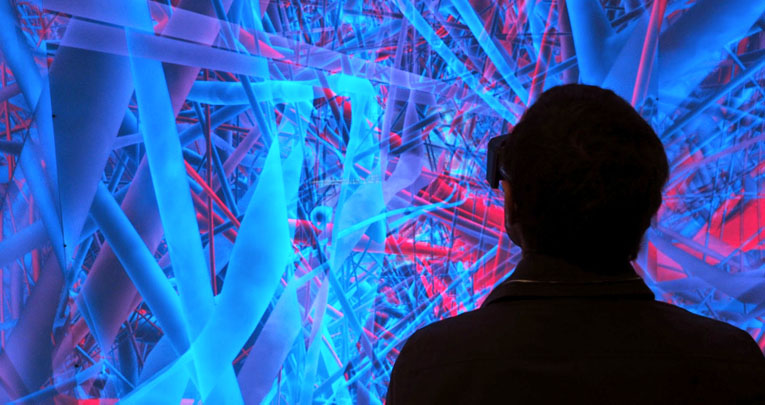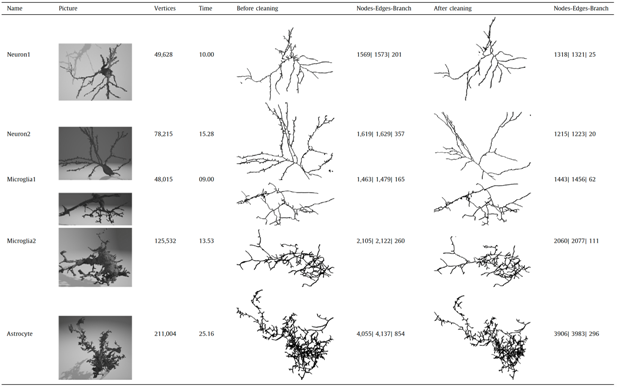
Computers & Graphics, 24 June 2020
Virtual reality framework for editing and exploring medial axis representations of nanometric scale neural structures
Daniya Boges a , Marco Agus b , Ronell Sicat c , Pierre J. Magistretti a , Markus Hadwiger c , Corrado Calì d
We present a novel virtual reality (VR) based framework for the exploratory analysis of nanoscale 3D reconstructions of cellular structures acquired from rodent brain samples through serial electron microscopy.
VR View showing the interface used by the user to create and modify nodes of a skeleton from the inside (panel 1 and 4) and from outside (panel 2 and 3) of a neuron reconstructed in 3D (cell in blue)
The system is specifically targeted on medial axis representations (skeletons) of branched and tubular structures of cellular shapes, and it is designed for providing to domain scientists:
i) effective and fast semi-automatic interfaces for tracing skeletons directly on surface-based representations of cells and structures, ii) fast tools for proofreading , i.e., correcting and editing of semi-automatically constructed skeleton representations, and iii) natural methods for interactive exploration , i.e., measuring, comparing, and analyzing geometric features related to cellular structures based on medial axis representations.
Users creating skeletons using a large screen in 2D (left) or within the VR headset (right).
Neuroscientists currently use the system for performing morphology studies on sparse reconstructions of glial cells and neurons extracted from a sample of the somatosensory cortex of a juvenile rat. The framework runs in a standard PC and has been tested on two different display and interaction setups: PC-tethered stereoscopic head-mounted display (HMD) with 3D controllers and tracking sensors, and a large display wall with a standard gamepad controller. We report on a user study that we carried out for analyzing user performance on different tasks using these two setups.
Table showing 5 test-case cells with their skeletons before and after proofreading using the VR headset.
a
Biological and Environmental Science and Engineering Division, King Abdullah University of Science and Technology, Thuwal, 23955-6900, Saudi Arabia
b
Visual Computing Group, Center for Advanced Studies, Research and Development in Sardinia (CRS4), Cagliari, Italy
c
Visual Computing Center, King Abdullah University of Science and Technology, Thuwal, 23955-6900, Saudi Arabia
d
Department of Neuroscience ”Rita Levi Montalcini”, Neuroscience Institute ”Cavalieri Ottolenghi”, University of Turin, Turin 10043, Italy










